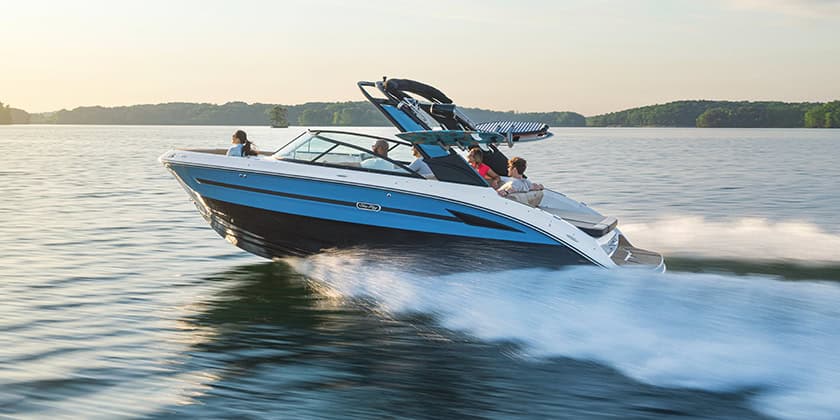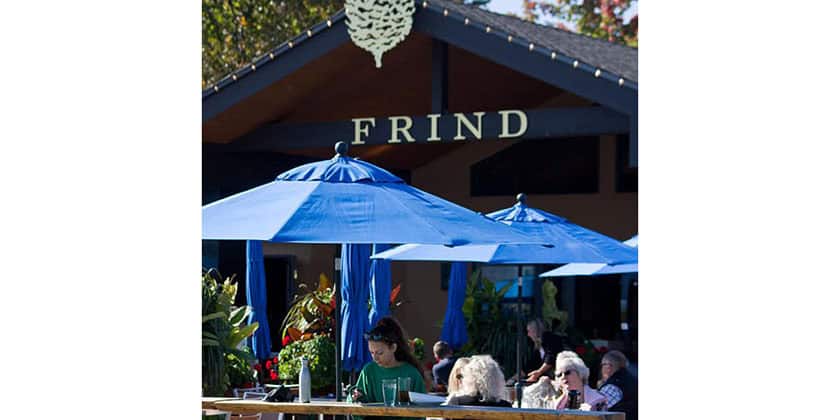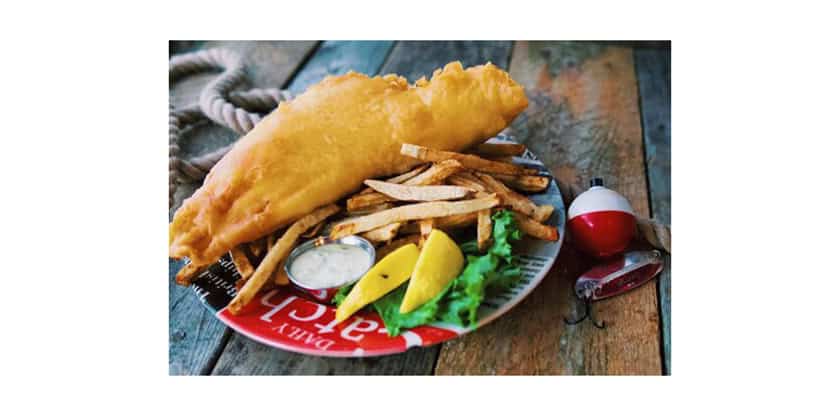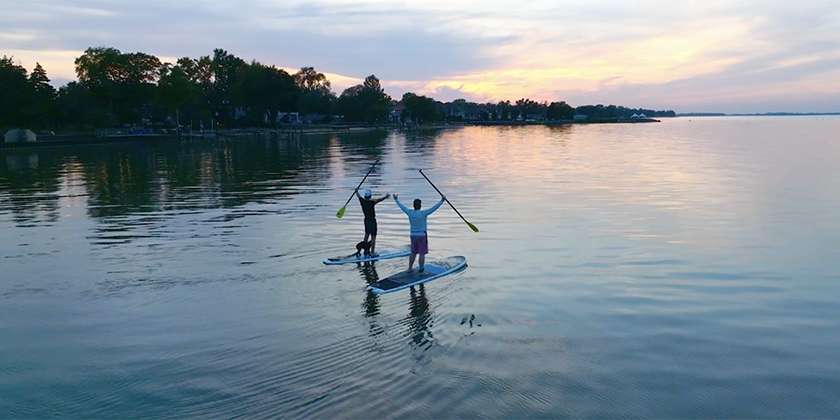Ontario 28
By Pat Sturgeon
When I saw an Ontario 28 for the first time, I was surprised that it had come from Ontario Yachts, as there seemed to be so few on the market. It turns out that most Ontario 28 owners don’t want to give them up because the Ontario 28 fits the perfect gap between a weekender and a long-distance cruiser. I feel it’s a perfect size to let someone learn and continue to enjoy years of sailing.
This sailboat was designed in 1978 for Ontario Yachts by Niagara Nautic Incorporated, which is responsible the Nautilus 36 and 40. These were the first pilothouse boats to be produced locally. The total production run of the Ontario 28 was about 40 boats from 1978 to 1982. However, the moulds were since destroyed to make way for bigger projects.
Henry Adriaanse headed Niagara Nautic at that time, but he left C&C Yachts to pursue his own endeavours. Henry wanted to design a boat that made practical sense for a builder and the customer. Dick Kneulman, the owner of Ontario Yachts, had the concern of how to build a boat that wasn’t too pricey for the market (and still make a profit, of course). Henry devised a simple effective tooling plan to get the man hours down on the construction, which created a standard level of quality the customer would appreciate.
He incorporated large, interior fiberglass modules that acted as a structural support to the hull. Superior Fiberglass helped with this work and remains as the trademark of Ontario Yachts. The Ontario 28 has tremendous amounts of fiberglass and gelcoat in its superior structure beneath the deck, which makes for a bright and maintenance-free cabin. The teakwood stands out beautifully to give the interior great definition. Functional is the best word to describe the interior of an Ontario 28. The V-berth down below is large enough to sleep two six-foot-tall adults comfortably. There are reading lights and shelves on both sides, which makes it easy to store small items. Strong aluminium overhead makes for good ventilation while sleeping. Just aft of the V berth is the head, which is to the starboard, and the door doubles to close off the forward cabin. Inside the head, there is plenty of room for toiletries, a first-aid kit, and even a small laundry bin. The toilet is a proper marine head with a separate holding tank. Outside across from the head is a hanging locker with a full-sized shelf for more storage.
Entering into the main cabin, the dinning table folds down, which opens the main saloon for entertaining guests. The simple bar hinge mechanism enables someone to quickly assemble and disassemble the table, which provides room for two or three to dine comfortably. The starboard settee slides out to form a large double berth, and the port settee has a foot-well to accommodate another adult – to make sleeping five persons comfortable.
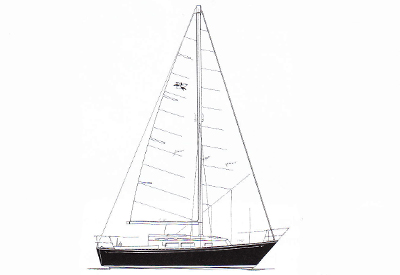 The chart table is laid out in a clever way to have just a bit more room. The chart table’s bench can be slid away when not in use. The station’s lift up lid helps a navigator to easily access navigation tools and charts. Above it, a small bookshelf and instrument panel keep things neat.
The chart table is laid out in a clever way to have just a bit more room. The chart table’s bench can be slid away when not in use. The station’s lift up lid helps a navigator to easily access navigation tools and charts. Above it, a small bookshelf and instrument panel keep things neat.
On the port side is a galley with ample counter space with a fold-down extension and a wooden cutting board over the stove. The stove is unfortunately alcohol, but the most popular stove of its time. The icebox is plentiful for the size of boat, but it’s a little too tight to get into as it is located well under the companionway bulkhead. Overall, the galley provides lots of storage, but the large counter area is the greatest feature.
Ontario Yachts certainly did not skimp on the engine. It comes standard with a 12 HP Yanmar diesel with a flexible couple to eliminate shaft vibration. This feature, along with the three-blade prop, easily makes the boat move at six knots in most sea states. This is a great feature when you have to return to port in a hurry. Although Yanmar ha s since replaced this size of diesel engine, parts are readily available and maintenance is a matter of annual oil, oil filter and fuel filter changes.
Deck and cockpit
The trademark of the Ontario 28 is the bulwark rail and spacious T-shaped cockpit. For those who have never heard of bulwark rails, this is a substantial railing around the deck, an integral part of the structure. Bulwark rails add stiffness to the boat’s structure and provide a good foot brace while on deck.
According to Henry Adriaanse, he uses this method of joining the hull and deck to eliminate the potential for deck leaks. Most boats have exposed fasteners every six inches that can potentially leak.
Forward on the bow is an anchor locke1 which has a drain and makes it far easier to keep things relatively clean in there. The stem head casting incorporates the bow-chocks but doesn’t make provisions for an anchor roller, which is easily added after-market if you want. The deck has a vent over the head compartment, which has teak grab rails rum1ing the length of the coach house.
The T-shaped cockpit is very comfortable, with high combing to give back support. Although the Ontario 28 came standard with tiller steering, most people opted for the wheel because the boat accommodated it well by its shape. The unique cockpit also has four large scupper drains to get rid of unwanted water. The stern and bow rails are double- welded stain less steel. The double lifelines, with pelican hooks at the stern, allow easy boarding after a nice swim on a hot day. You’ll find a large lazzarette locker behind the helm and two cockpit lockers with shelves built inside – both spaces great for tools and spare parts.
Rigging
Ontario Yachts know what type of hard ware to use for rigging. The mast is an aluminium extrusion with an integral sail track. The halyards are all internal and the boom ‘s gooseneck fitting is strong. The sail plan uses forward-sand aft lower shrouds so that there is no need to use a baby stay, which gets in the way when tacking. The advantage is that the mast is held in place by two more separate chain plates. In turn, it doesn’t put all of your eggs one basket. Not only does the use of for and aft lower shrouds strengthen the boat, but it also stops the mast from pumping in heavy seas.
Sailing
The Ontario 28 was never designed to be a racing machine but more of a light air coastal cruiser. The boat has a very sea kindly feel and moves along at a steady pace. The boat has a large spade rudder and a long fin keel. This helps the boat bear-off down wind in straight-line lumpy seas. Although it does not go to weather very well with the standard genoa sheeting in on the rail, many owners added additional genoa tracks inboard to allow the boat to point much better with the Genoa sheeted in. The biggest frustration while sailing was that in light air, you could feel the three-blade prop on an offset shaft dragging through the water. The solution has been to install a folding or feathering prop.
The Ontario 28 is a typical example of a well-constructed boat from the late ’70s and early ’80s. Proud owners meticulously care for most of boats I have seen. If you live on the West Coast, I understand that several of these boats are for sale around Vancouver.
Ontario Yachts are located in Burlington, Ontario. The phone number is (905) 639-8382.
The Ontario 28 debut base price in 1978 was $22,000 and today will sell around $33,000 (1999 price).
Originally published in Canadian Yachting’s fall 1999 issue.
No specifications listed in article.










